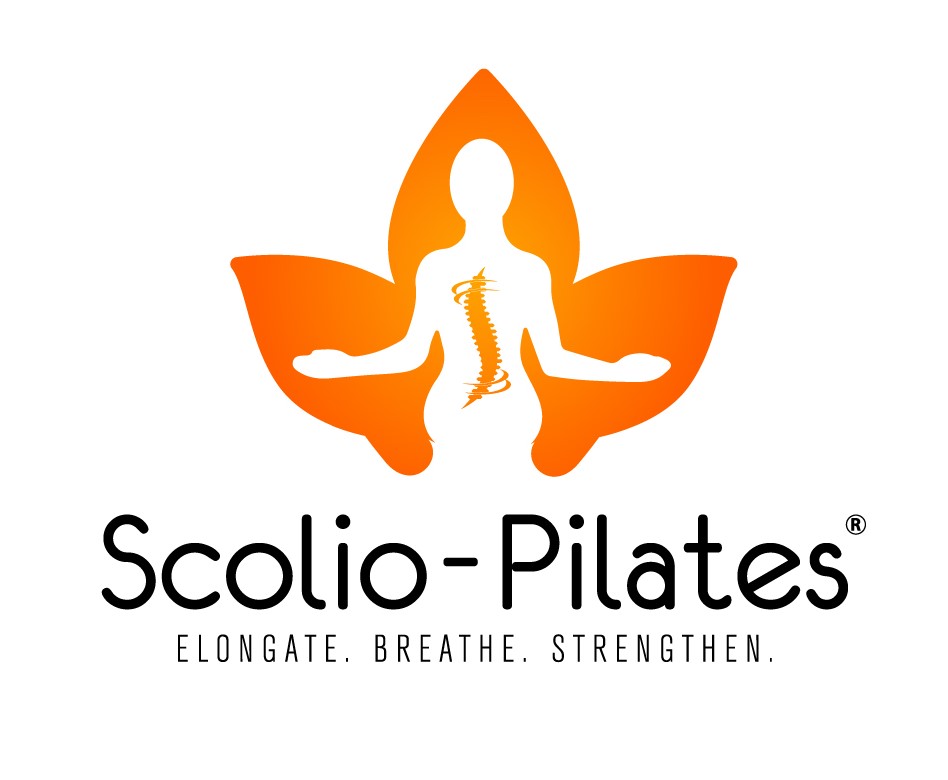Exercise reduces scoliosis pain and curvature. That’s the good news. The really good news is that we have studies published in peer-reviewed medical journals to back up those claims. I chose three for you to look at. If you go to PubMed and search ‘scoliosis exercise’ you’ll find a few hundred more. These are the studies that are the basis of the exercises in my book, Scolio-Pilates.
1. In 2003, a study of adolescents with scoliosis showed a significant reduction in the degree of curvature over the course of one year using exercise alone. The Cobb angle, used to measure the degree of a scoliosis curve, was reduced on average from 26.1 degrees to 17.85 degrees with exercise alone. The type of exercise used in the study is referred to as the Schroth Method, designed by Katharina Schroth in the early 20th century. Her exercise program for correcting scoliosis is the building block that all modern day therapeutic exercise programs stand on and is described in the book, Three Dimensional Scoliosis. Her exercise program relies on lengthening and de-rotating the spine, used since the time of Ancient Greece to correct scoliosis, along with a strengthening program.
Read the entire study at PubMed: The efficacy of Schroth 3-dimensional exercise therapy in the treatment of adolescent idiopathic scoliosis in Turkey. Saudi Med J. 2005 Sep;26(9):1429-35.
2. A 2010 study shows that asymmetrical exercises were effective in engaging the muscles on the concave side of the scoliosis. The concave muscles, or muscles on the non-hump side of the scoliosis, are generally in a state of severe atrophy. The weaker these muscles become the more the scoliosis is allowed to progress. The study concluded “that these exercises may advance care of patients with scoliosis.”
Source: Schmid AB, Dyer L, Böni T, Held U, Brunner F., Paraspinal muscle activity during symmetrical and asymmetrical weight training in idiopathic scoliosis.Journal of Sport Rehabilitation, 2010 Aug;19(3):315-27. Read the complete study here.
3. With scoliosis, there is a concern surrounding pulmonary (lung) function because of the mis-shapen and rigid ribcage housing the lungs. A rigid ribcage will make it harder for the patient to breathe normally and lung disease becomes a concern. This study shows that exercise increased mobility in a rigid ribcage and greatly increased vital capacity, measured by the amount of air exhaled, in scoliosis patients.
Source: Weiss, Hans-Rudolf, M.D., “The effect of an exercise program on vital capacity and rib mobility in patients with idiopathic scoliosis.” Spine, Vol. 16 (1/1991). Read the complete study here.
As a result of these studies and also my own scoliosis getting much worse after a discectomy surgery three years ago, I started employing the three-dimensional techniques from the Schroth Method and applying it to my Pilates work. And even though I was certain I was headed back to surgery, the pain in my spine subsided. I used the method so successfully with other scoliosis clients that I decided to put the exercises into a book: Scolio-Pilates. If you are interested, there is more information here about the book. Good luck!!


